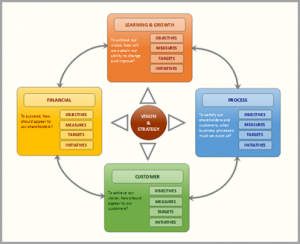Slow business can require cuts, but slashing your content marketing efforts does more harm than good.
Drastically reducing your content marketing is like stepping over a dollar to chase a dime, especially in a down market.
Here are four reasons why:
1. Keeping your pipeline flowing
Content marketing is all about momentum. At our firm, we have to continually emphasize that results take time, but consistency and quality always yield results. Buyers still have needs during a slump, but they’re more careful about who they’ll buy from and how much information they require to pull the trigger. Your pipeline might slow down but don’t discourage prospects on the fence by going silent when they need your content the most.
2. Building and fortifying your brand
Your brand reputation is one of your most valuable assets, and you only build it by establishing your personality in the market. Content makes that happen when you tell compelling stories. Content also gives you relevancy in your niche and offers you the chance to educate prospects on your value, no matter the market conditions. Once the dip is over, you can be the name on the tip of everyone’s tongues.
3. Improving client trust and loyalty
Hopefully, you’re more than a vendor or provider for your clients. You should be an industry consultant and a trusted voice. Delivering content that solves problems and answers questions goes a long way when everyone is pinching pennies. Offer actionable value in your material, and buyers will see you as a resource that boosts their returns on investments.
4. Outpacing the competition
Most companies will tend to hold off on content creation during a recession. That’s the perfect time to enhance your efforts and pass those companies by. These 16 household-name companies began during or shortly before an economic downturn. Powerhouses such as Disney, Microsoft, and Google took calculated risks and kept forging ahead when the going got rough. In each case, consistency in product quality and smart marketing paid off in industry dominance.
Practical steps to take
I’m the number-one advocate for content marketing, but I’d never tell you to pour money into it blindly. Take practical steps for solid, ROI-driven output when you have to tighten your belt.
Live (or die) by ROI to design a new budget. After you trim legitimate waste around your organization, you can turn your eye to your marketing if necessary. Ruthlessly toss out activities that aren’t delivering the right metrics. Just remember to look at long-term trends and don’t bail on initiatives that had a brief dip and only need some refinement. In turn, double down on strategies that are working well.
Position yourself as a thought leader. If you’re not filling as many orders, use your extra time to do more research into your field. Then, add to the conversation with your perspective to show others how to benefit. You should do this even while you work with a content marketing agency. At MIG, we encourage our clients to continue creating blog posts while we supply a steady stream of articles that we fine-tune for SEO. The more content, the better!
Also, don’t forget to take advantage of your team as a content creation resource. Before you start cutting hours and assignments, enlist others for help with brainstorming and writing articles to boost your content volume.
Position yourself as a friend. Nearly every company seems to claim to be like “family” or a “friend” that’s always there for their clients. However, do they really have clients’ backs when times get hard? You may be struggling, but so are your ideal customers. When you talk about the things your target audience cares about, you position yourself as someone with empathy who’s on their wavelength.
Plus, content doesn’t always have to be informational. If you can entertain or uplift folks, you’ll take their minds off their troubles for a bit, and they’ll see you as a real person behind the screen.
Reuse and recycle. Repurposing old content should already be a part of your content marketing strategy. If you’re not making full use of refreshing old topics, you now have a cost-effective way to get more content out there. Update poor-performing pieces with better writing, keyword placement, and visuals to drive traffic. In addition, fresh perspectives on previously covered hot topics increase views.
Whether you’re dealing with a global recession or local setbacks, solid content marketing helps you survive. Better than that, it gives you what you need to thrive.
The post Why tight budgets mean maximizing content appeared first on MarTech.
MarTech(5)
Report Post





